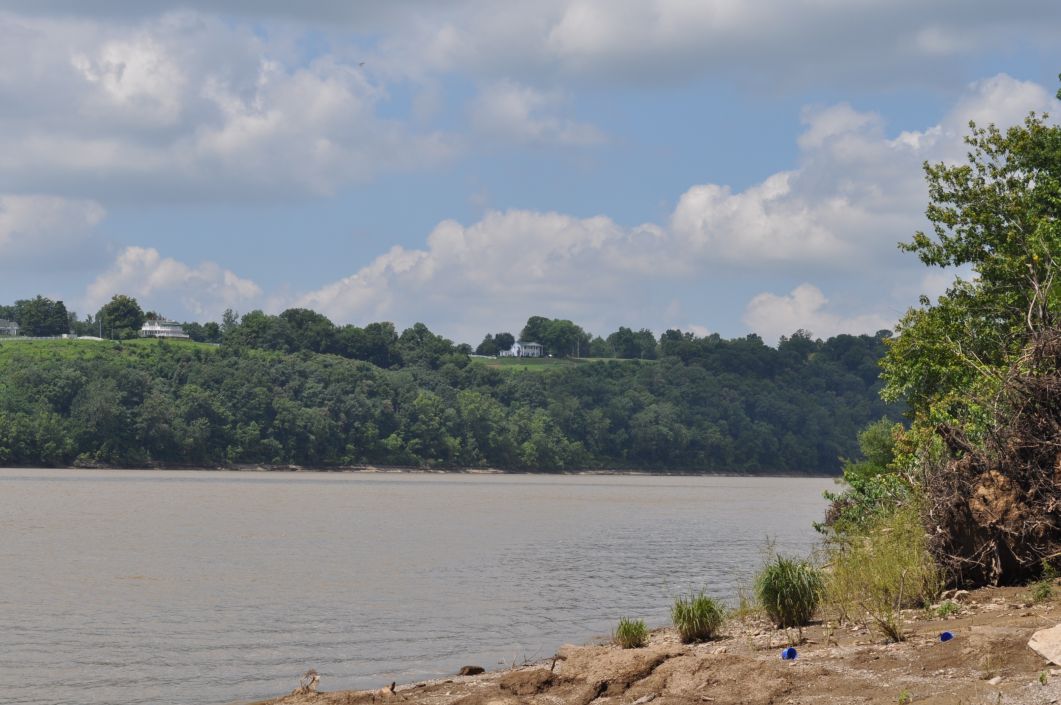It's been years since we've been to a bona fide air show. It's been so long, in fact, that I can't rightly recall the when and where of the last one we went to. Thinking back on it earlier this summer, I was surprised to discover that we might not have been to an air show since were still stationed at
Offutt Air Force Base, Nebraska, in 1997. Time certainly flies, and it's a shame that we didn't take advantage of attending more shows over the years while the kids were still young.
 |
| The Opening Ceremony of AirFest 2013 |
Resolved to make amends, I began to scour the Internet for upcoming air shows in our vicinity. I learned that, besides the massive and incredibly difficult to attend
Thunder Over Louisville extravaganza held each year, Kentucky is somewhat barren of air show opportunities. As luck would have it, though, one of the few Kentucky air shows is held every other year just down the road from The Homestead.
Officially called the
Georgetown-Scott County Air Festival, the Scott County AirFest is a relatively new event that organizers hope to hold every other year in September. Taking place at the Georgetown/Scott County Regional Airport, the show originated as a means of drawing attention to the airport as an alternative to the Blue Grass airport in Lexington for private and commercial light aviation usage.
 |
| Small crowd |
The last air show featured a number of warbirds, including a B-17, as well as Kentucky Air National Guard aircraft. This year, thanks to The Sequester, no active military aircraft would be participating. Vintage aircraft would be limited as well, with a B-25 from the
Yankee Air Force in Michigan (Go Blue!) serving as the centerpiece. For the air show starved public, like me, it seemed good enough.
Since The Youngest was down with a migraine, Wonderful Wife and I headed for the show on our own. The weather was absolutely beautiful - a cloudless, deep blue sky and temps in the low 70's. After a short hayride from the parking area to the flightline entrance (not something you expect at an air show), we handed over our $5-a-piece admission fee and stepped onto a tarmac that was
packed with aircraft nearly empty. A few private aircraft were available for viewing near the entrance (think Cessnas and Beechcraft) and the B-25 could be seen at the far northern edge of the pavement, but in between - nothing. Well, almost nothing. A Stearman biplane was taxiing out to give a lucky enthusiast the open-cockpit ride of their life, but really that was the extent of the displays.
 |
| The Stearman taking a passenger for a ride |
We watched the three parachutists descend with their American flags, then headed past the antique tractor display and community services booths to the B-25. Built in 1943, B-25D s/n 43-3634 was assigned to the 489th Bombardment Squadron where, as the "
Ellen E. & Son", she flew seven combat missions over Corsica, Sicily, and the Brenner Pass. After the war, the aircraft was handed over to the Royal Canadian Air Force where it remained until purchased by a private party out of Detroit. Eventually making her way to the Yankee Air Force, she was renamed "
Yankee Warrior" and restored to military configuration in 2001.
 |
| B-25D "Yankee Warrior" |
The crowd was sparse, but the majority of those that were in attendance had gathered around what was obviously the main attraction. I managed to snap a few exterior photos, but the interior was pretty well buttoned up since she would be conducting flights for the very lucky few who could plop down $400 for a ride. I, alas, was not among the few.
While most of the adults were fawning over the B-25, many of the children in attendance were mesmerized by the remarkably "life-like" R2D2 replica. Even R2's squeaks and clicks weren't enough to make up for the disappointment of not seeing more aircraft on display.
 |
| Good ol' R2D2 |
After having spent just over an hour on the premises, Wonderful Wife and I left for our "Plan B" activities (more on that later). Although I'll keep an eye on the plans for the next edition of AirFest, it's unlikely that I'll take time out to attend. It was a dud of an air show, but if there is a bright side to the time we spent there it's that my air show appetite has not been sated.
























































